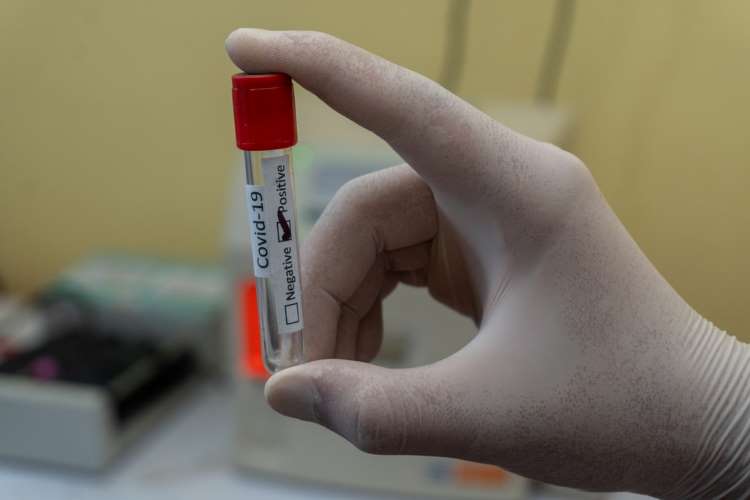
By Manu Raj
Herd immunity is back in news now. Everyone is busy claiming their country is at the doorstep of herd immunity. The crowd is happily cheering these oracles as if they are just about to touch the golden line of eternity. The political trumpets are ready to blow anytime soon as the fifth round serological survey in Delhi has found that more than 50% of the sample have developed antibodies against Covid-19.
I am not a big fan of this “herd immunity” bandwagon. I am not alone in this — many fellow experts in the field of epidemiology have an inherent dislike to this fancy term. As Dr Srinath Reddy, a world-renowned cardiologist turned clinical epidemiologist, once told me, “I prefer the term herd protection to herd immunity. Simply because there is no immunity in that phenomenon, just a temporary scene that can change any moment.”
Dr Reddy is absolutely spot on. There is no such immunity given on a silver platter when a certain proportion of people are immune. It’s just a fallacy to excite the hope neurons in your brain. Some basics before we discredit this phenomenon.
READ I Budget 2021 should learn Covid-19 lessons, strengthen public health system
Herd immunity against Covid-19 not in sight
Here’s the definition of herd immunity. “Herd immunity is the phenomenon of indirect protection from infectious disease that occurs when a large percentage of a population has become immune to an infection, either through previous infections or vaccination, thereby providing a measure of protection for individuals who are not immune.”
The underlying principle of herd immunity is very simple. When populations get enriched with people who are immune to an infectious disease, the immune persons will not transmit the disease to the remaining non-immune, susceptible population. In fact, immune people become efficient barriers to disease transmission and thereby protect their non-immune counterparts from the infectious agent like a fortress. The agent finds it difficult to reach its target non-immune people as it gets blocked by the barrier of immune people.
A steady increase in the proportion of immune people will slow the spread of the disease, make it plateau and then it declines to zero (eradication). It never reaches zero all the time, but comes close to that point. Good enough, people can bother about other things like work and play then.
READ I Covid-19 vaccine: Fast action, caution can save lives
The greater the share of immune individuals in a community, the smaller the probability that susceptible individuals will come into contact with an infectious individual. This will shield non-immune individuals from infection. A very satisfying concept.
Now a little bit of maths. How will one decide that how many people will have to be immune to protect the remaining? This can be calculated from R0, the reproduction number. For Covid-19, the global estimates are now somewhere between 2 and 3.5. There is a general consensus that roughly 70% of the population needs to be immune to achieve herd immunity for Covid-19. In short, the 70 immune people will shield the remaining 30 from Covid-19 infection.
Epidemiologists call this magic proportion (0.70) herd immunity threshold (HIT) for COVID. For the die-hard maths fan reading this article, HIT = (1-1/R0)x100. And the R0 for Covid- 19 is somewhere between 2.5 to 3, giving us close to 70%. If a sero survey shows that 50% of the people are infected, all one needs to do is to take it to another 20% more, reach the 70% golden line of HIT, have a cheer party, switch off the lights and go to sleep peacefully. Is this going to happen? Did the maths tell us the reality? Answer is a resounding NO.
READ I Budget 2021 should learn Covid-19 lessons, strengthen public health system
Busting the myth of herd immunity
This just means that the epidemic curve goes down and down and will die one day, not today, may be months later. If you are the health minister of the country, you can be happy and relaxed. The country is winning the game and victory is at the end of the tunnel. Cool. You should just know that each dot in that epidemic curve you see is a person who has a family, work and life left to live. You need to think and talk about each dot of that curve.
If you are a family person and your family is yet to be infected by Covid-19, nothing much changes for you. Just the probability of things comes down, but the zero is not in the vicinity.
This is because there is no immunity in “herd immunity” per se. It should be seen as a virtual arrangement where the virus finds it difficult to transmit itself to the yet-to-be infected people. Just a temporary arrangement like a deck of cards. One whiff, the card castle is down. And the body gets the disease. This is because the temporary arrangement never stays put. People may start to move more, some may lose immunity and sometimes the virus may mutate too fast, becoming close to a new one.
READ I Odisha Millets Mission extends lessons for other states, nations
In short, attaining herd immunity is not a big deal when you are thinking from a person’s perspective. You still have no immunity; your family is still at risk and you go through the same horror we saw earlier. The only silver lining here would be that the hospitals are less crowded and there is a smaller number of infective individuals out there in the open. The chances of you getting infected is less and you could get better treatment. But once infected, the scene remains the same. We are talking about a virus that kills one in 50 and gives chronic disease to one in 5.
Covid-19: Vaccine hesitancy a big threat
So, just stay away from the fallacy of herd immunity if you are not a policy maker or a health minister. Just think from a person perspective. India is currently leading the world with vaccine hesitancy at levels never seen before for any other illness. Why did this happen? Why is that we have the vaccine and many are turning their backs to the jab, exposing themselves and families to risk of infection? Why are so many among us suspecting decent vaccines?
The reasons are in plenty, but most of it is thanks to the nascent, brilliant graduates of SMUMS, the Social Media University of Medical Sciences. They are bringing in new hypotheses about what harm vaccines can do to you from sex to skin. The government too did its part by rushing an unproven vaccine to the scene. Approving any vaccine without a tiny bit of phase III efficacy data was bound to backfire. It did, and the damage is irreparable.
READ I Budget 2021: Proposals to put Indian economy, industry back on track
And the trumpeting of herd immunity is going to fuel vaccine hesitancy. Those vaccine haters will boast about HIT when and where they can and pull you back from the queue to the jab. They will harm you big if you don’t use your own brain.
Forget all the nonsense. Forget it for the better future of your loved ones. Just be the one who takes all the precautions. And when the government calls you for vaccination, just put on your shirt and stand in queue. There is only one threshold you should be bothered now — the “hard immunity” of your own family.
(Dr Manu Raj is a pediatrician, clinical researcher and research methodologist based in Kochi.)
Dr Manu Raj is a paediatrician, clinical researcher and research methodologist based in Kochi.

